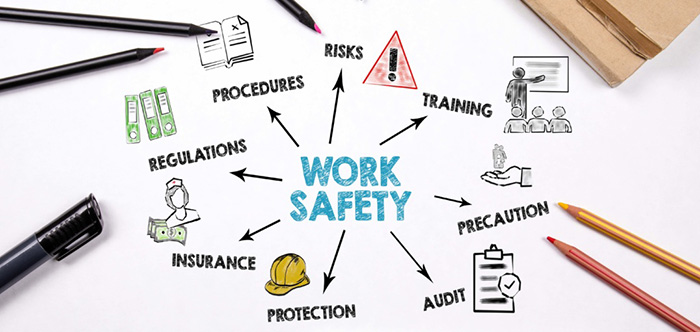Effective Risk Management:
A Closer Look At Health And Safety Practices

In facilities management, maintaining a safe, hazard‑free environment for everyone who enters your building is a critical responsibility. Robust health and safety practices have always been important in our work but perhaps matter now more than ever before in today's increasingly complex world.
Implementing effective risk management is fundamental to smooth operations and our duty of care to building users. Beyond policies and procedures, we want people to feel genuinely secure and at ease in the spaces we oversee.
Understanding The Risks In Facilities Management
In the role of a facilities manager, you're tasked with a broad spectrum of responsibilities, central to which is the pivotal job of managing risks. Both commercial and residential facilities come with their own set of potential hazards. Common physical risks like slips and falls demand vigilant management to prevent serious repercussions. Compliance issues are equally critical; falling short of legal standards can lead to financial losses and harm your reputation. Environmental risks, encompassing elements such as air quality and waste management, require your constant oversight.
Proactively identifying these risks through comprehensive risk assessments is key. This approach is about staying ahead of potential problems, not just responding to them. By pinpointing your facility's unique challenges, you can take steps to reduce these risks, ensuring a safer and more secure environment for all.
The Importance Of Health And Safety Practices
As a facilities manager, making health and safety a priority goes beyond just following regulations - it shows you really care about everyone's well‑being. Robust protocols create a safe, productive environment by protecting people from hazards. This matters more than just checking boxes.
Implementing effective practices like regular drills and up‑to‑date, safe equipment is crucial to reduce accidents and injuries. It's also important to keep up with the latest guidelines. Sometimes getting tailored advice from experts makes sense for your facility's specific needs. Consultants, such as these health and safety consultants in Manchester, can provide insights and solutions to potential hazards. A safe workplace is the foundation for a positive environment where people can thrive. I tried focusing the language more on caring about people rather than just regulations.
Implementing Effective Health And Safety Strategies
As you steer your facility towards a safer future, implementing effective health and safety strategies is crucial. Your approach should be comprehensive, covering all aspects of your facility's operations. Start by conducting regular risk assessments to identify potential hazards. This proactive step is key to preventing accidents before they occur.
Training your staff in health and safety protocols is equally important. Ensure everyone is aware of the procedures and understands their role in maintaining a safe environment. Regular updates and refresher courses will keep this knowledge fresh and relevant. Your commitment to health and safety is an ongoing process. It's about continually striving to improve and adapt your strategies to ensure the well‑being of everyone who uses your facility.
By proactively identifying risks, training staff, and maintaining a safe environment, you create a foundation for a thriving workplace. Remember, the journey towards a safer facility is continuous, requiring your dedication and vigilance. Your efforts comply with health and safety regulations and demonstrate a deep commitment to the well‑being of everyone who enters your facility. Keep striving for improvement and stay informed to ensure your facility remains a safe and productive space.

























































